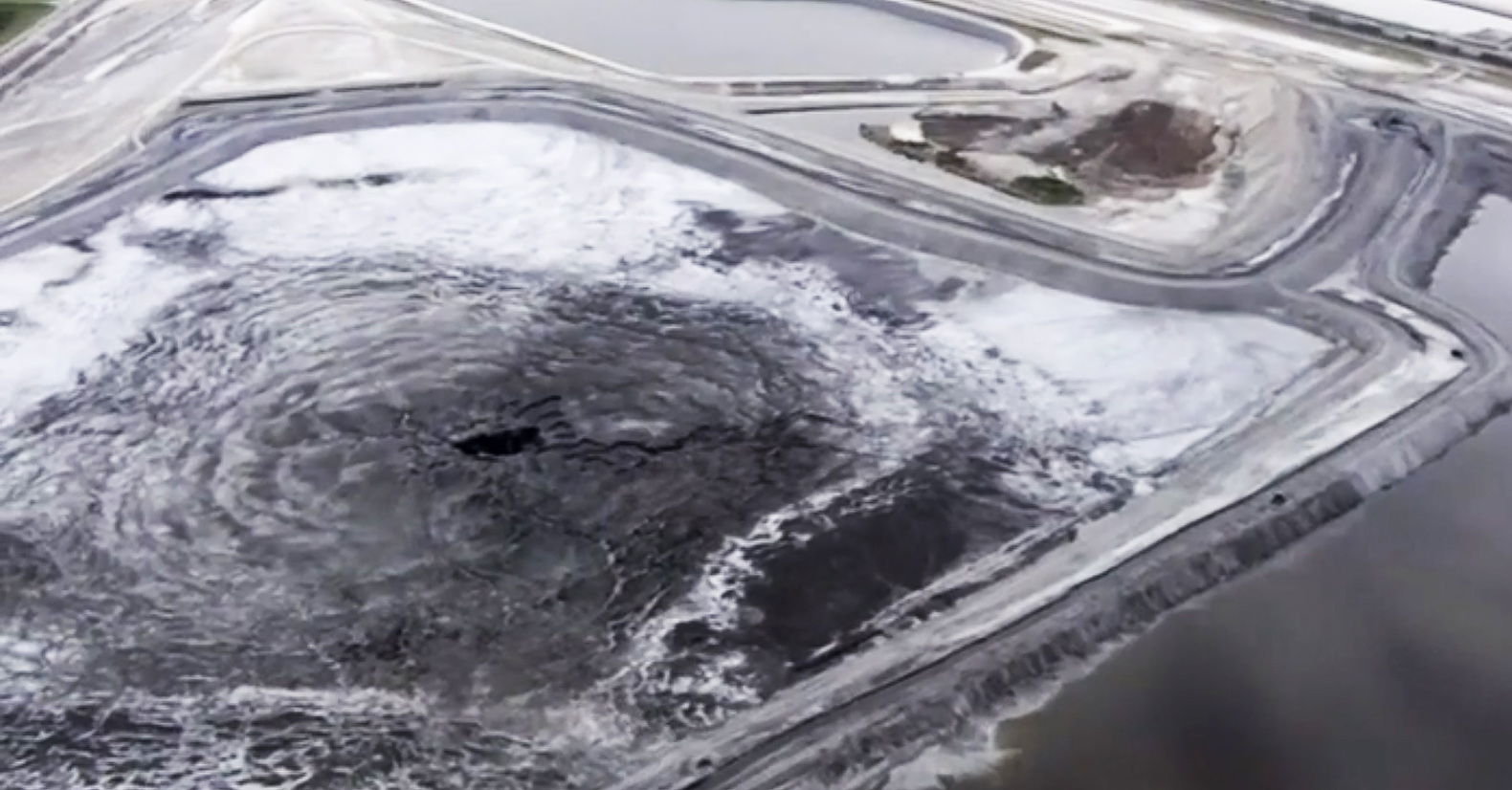
A massive sinkhole at a fertilizer plant should be plugged by spring, months after contaminated water and waste began flowing into Florida’s main drinking water aquifer, the company said Friday.
In an email to The Associated Press, Mosaic spokeswoman Callie Neslund said the company recently finished a survey of the sinkhole cavity.
“Based on the survey results, the company now has a better understanding of the sinkhole dimensions – which is a critical step in remediating the sinkhole,” she wrote.
Neslund said the upper cavity is between 140 feet and 150 feet in diameter at its widest point, and about 220 feet deep.
Mosaic – one of the world’s largest producers of phosphate and potash for fertilizer – previously acknowledged that the contamination had spread to groundwater around the sinkhole.
The Minnesota-based company’s announcement about plugging the sinkhole comes after it reached a deal with the state Department of Environmental Protection earlier this week. Mosaic is required to put up $40 million, and if it fails to follow through on the cleanup, the company will face fines of up to $10,000 per day.
Meanwhile, state environmental officials said that contaminates found in private wells near the site are not believed to be related to the sinkhole.
Agency spokeswoman Dee Ann Miller said in an email that private wells near the Mosaic site where high levels of contamination have been found may be associated with “natural geologic deposits and processes.
“In other cases, it may be related to the construction of the water well itself,” she wrote.
Neslund said that the company has not detected elevated levels of contamination in wells elsewhere on its property. It is working to pump out tainted water from a well near the sinkhole.
A Mosaic employee discovered the water loss caused by the sinkhole Aug. 27 and the state and U.S. Environmental Protection Agency was notified the next day, as required by Florida law, according to David Jellerson, the company’s senior director for environmental and phosphate projects.
However, homeowners near Mosaic’s New Wales plant weren’t first notified by Mosaic or the state agency until Sept. 19, after news of the sinkhole broke the previous week. After that, Mosaic began providing them with bottled water.
By then, a huge wastewater pond had mostly disappeared through the hole in the massive pile of phosphogypsum, a fertilizer byproduct that contains minute traces of radiation.
Mosaic stacks the chemicals in hill-size piles that can be hundreds of feet tall and visible from space.
Neslund said as of Friday, the facility received about 5 inches of rainfall since the beginning of October.
“We have not determined how much of that rainfall entered the sinkhole,” she wrote. “The recovery well continues to pump about 5 million gallons of water each day. Onsite groundwater monitoring confirms that any impacted water is being recovered.”



